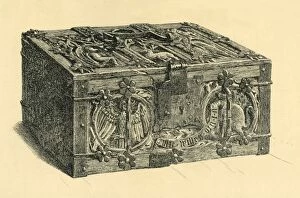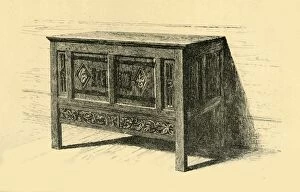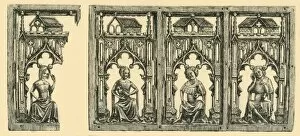Slocombe Frederick Albert Collection
"Slocombe Frederick Albert: A Master Craftsman of Timeless Artifacts" Step into the world of Slocombe Frederick Albert
All Professionally Made to Order for Quick Shipping
"Slocombe Frederick Albert: A Master Craftsman of Timeless Artifacts" Step into the world of Slocombe Frederick Albert, a visionary creator whose craftsmanship has left an indelible mark on history. With each piece meticulously crafted, his artistry spans centuries and showcases his immense talent. From the exquisite casket dating back to the 14th century, adorned with intricate carvings that tell stories of a bygone era, to the head of a Tau Cross from the 12th century, displaying Slocombe's mastery in capturing religious symbolism - every creation is a testament to his skill and dedication. Intriguingly, Slocombe's creativity transcends time as seen in the walnut mirror frame from the early-mid 19th century. Its elegant design reflects both classical influences and contemporary aesthetics, showcasing Slocombe's ability to adapt while maintaining timeless beauty. The oak box from the 14th century stands as another remarkable example of Slocombe's expertise. Its sturdy construction and ornate detailing speak volumes about his craftsmanship that has stood strong for centuries. Slocombe also ventured into ecclesiastical art with pieces like the monstrance from around 1450. This sacred artifact radiates divine splendor through its meticulous workmanship - a true testament to Slocombe's reverence for faith. His legacy continues with creations such as the late 15th-century oak cabinet and chest - functional yet exquisitely designed storage solutions that seamlessly blend form and function. Amongst his works lies The Reichenau Crozier; this stunning piece dates back to 1351 and exemplifies not only Slocombe's technical prowess but also his ability to capture historical significance within each stroke he made. One cannot overlook Slocombe's crystal crucifix from approximately 1550; it mesmerizes viewers with its delicate beauty while evoking profound spiritual contemplation through its ethereal presence.












